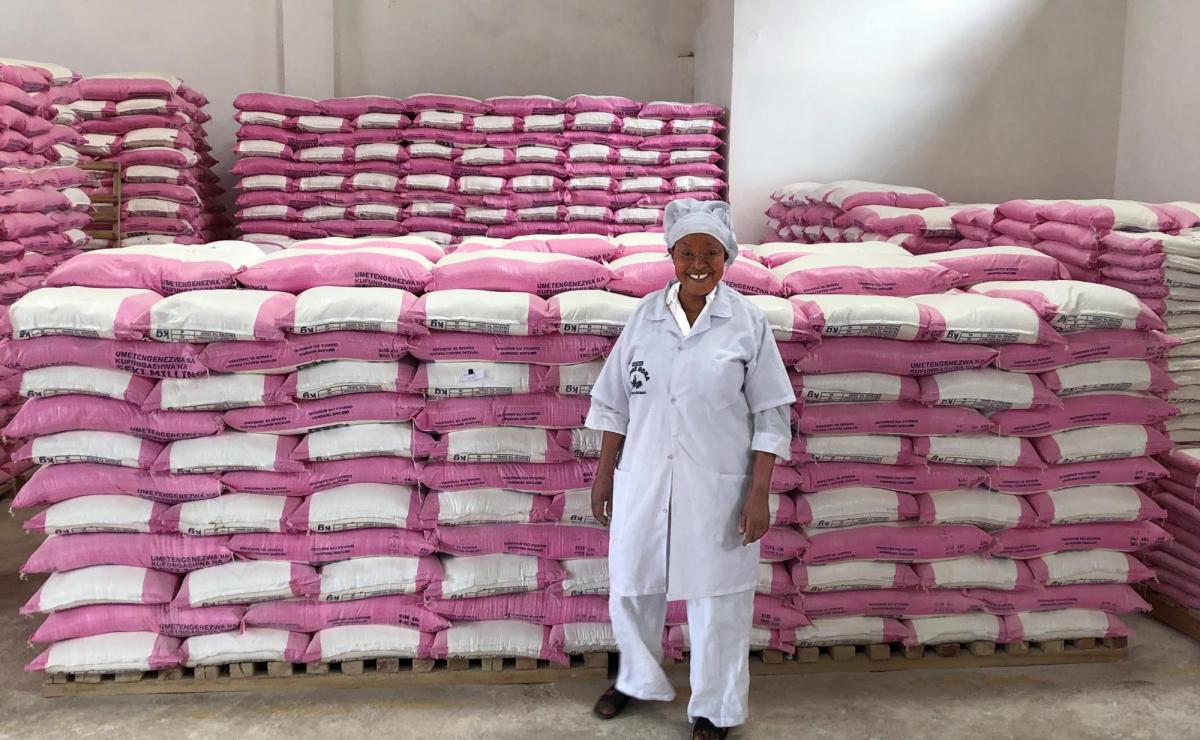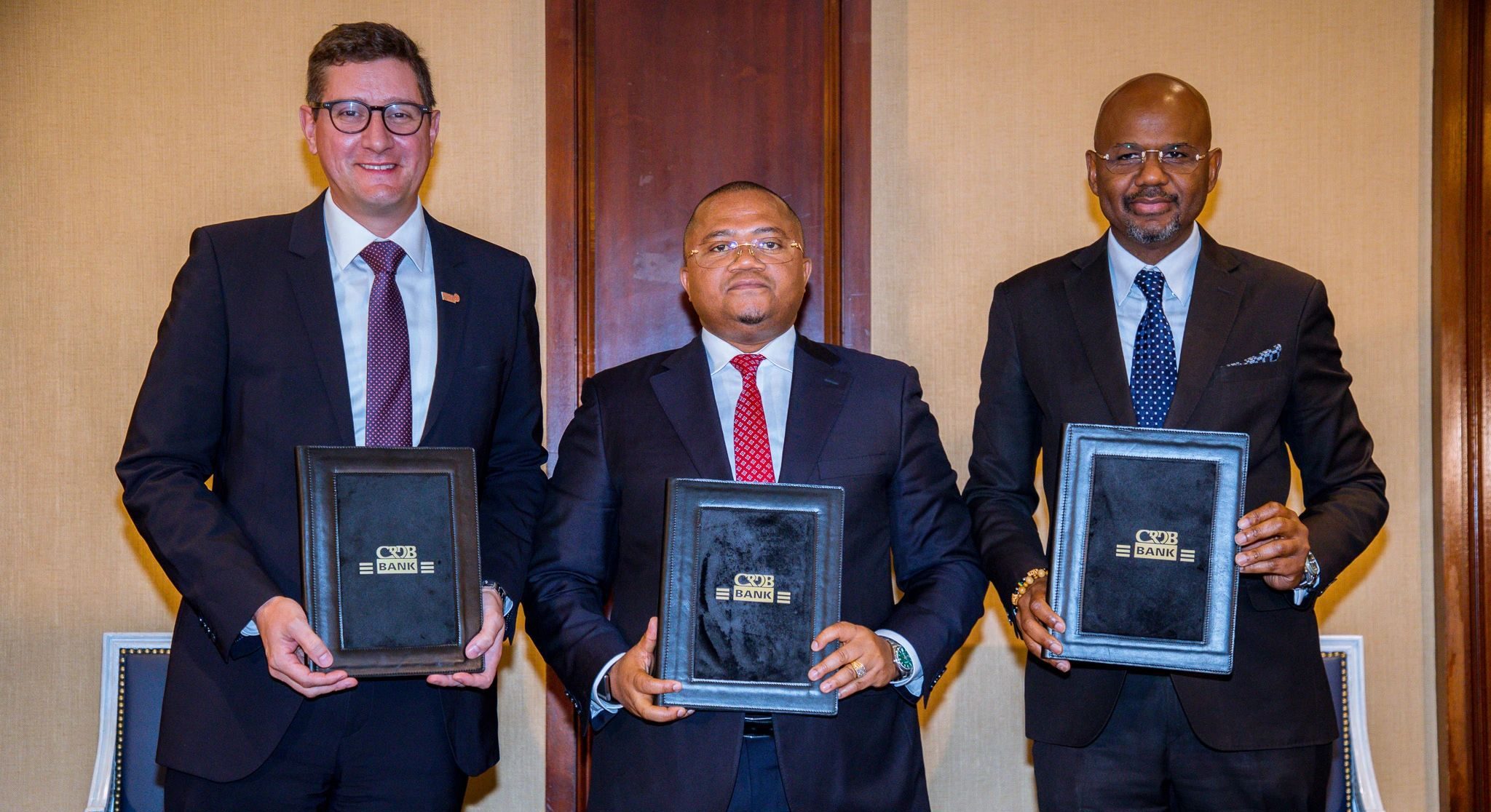
Wednesday, 20th August 2025

Par inAfrika Reporter
By the time you read this, Sanku’s bright-pink flour bags have already traveled a long way—through village mills, school kitchens, refugee settlements and city markets—carrying iron, folate and zinc that most families will never see but their bodies will never forget. In Q3 FY2025, Sanku says it crossed 25 million people reached with fortified flour across Eastern Africa—triple the eight million of a year ago—with a clear line of sight to 30 million by the close of September. That’s not a vanity metric; it’s fewer anemic pregnancies, sharper minds in classrooms, and fewer children condemned by malnutrition before their fifth birthday.
What changed? Policy, production, and price—tightened into one flywheel.
In April, Tanzania officially launched new food-fortification regulations that extend mandatory fortification beyond large industrial plants to the country’s ubiquitous small and medium millers. The government set a seven-month compliance window and empowered inspectors to enforce standards down to the last village. In plain terms: if you pack and sell wheat or maize flour, you must fortify—or face penalties once full enforcement begins in December 2025. It’s a decisive break with a decade of partial coverage and a foundational step toward “all-scale” fortification.
That shift matters because hidden hunger remains a structural drag. UNICEF estimates that roughly one in three Tanzanian children under five is stunted—an inequality that starts in the gut and echoes through a lifetime of earnings, health costs, and national productivity. Fortifying everyday staples is one of the rare interventions that can move those numbers at population scale and at low cost.
Rules only work when supply chains do. In late 2024, Sanku’s premix blending plant in Dar es Salaam began supplying millers domestically and across borders, cutting lead times and foreign-exchange headaches for nutrient inputs. The local factory underpins the regulatory push with reliable premix in local currency—a practical fix to an old bottleneck.
The same playbook is now unfolding to the north. Ethiopia has handed over land in Addis Ababa’s Kilinto Special Economic Zone for a second premix factory, with construction milestones publicly marked in June. Once operational, the plant is expected to produce up to 3,000 tonnes of premix per year—enough capacity to support tens of millions of people across the Horn and beyond—and to deepen Ethiopia’s own enforcement of mandatory wheat-flour fortification.
On the last-mile hardware side, Sanku reports its 100th dosifier installed in Ethiopia—small but telling proof that regulation, inputs, and equipment are aligning on the ground. And development partners are crowding in: a Feed the Future call this year explicitly tied micro-grants and technical help for Ethiopian millers to Sanku’s dosifier tech and national standards.
Kenya’s evolution is less about passing new rules than about making existing ones bite. The country has long required fortification of key staples, but consistency at smaller mills and along fragmented distribution routes has lagged. Here, the quiet hero is verification: simple iron spot-test kits and routine market checks that make compliance visible. Several Kenya and regional programmes have leaned into that approach over the past two years, closing the loop between regulation, mill practice, and what actually shows up in shops.
Meanwhile, Sanku’s Kenya operation continues to scale with a clear mandate—reach every miller that sells into communities most at risk, and keep the quality bar high. WFP’s Innovation Accelerator, which has supported Sanku’s growth, frames the model plainly: enable small and medium millers to fortify without raising prices by pairing affordable premix, IoT-tracked dosifiers, and service logistics.
School meals are where fortification meets tomorrow’s workforce. In Rwanda—one of Africa’s few countries committed to universal school feeding—the Fortified Whole Grain Alliance has demonstrated that fortified whole-grain maize flour can be produced at no extra cost compared to refined flour for institutional buyers, while meeting taste, texture and shelf-life benchmarks. That is the kind of budget-neutral evidence ministries and WFP procurement teams need to switch menus at scale. (Sanku has engaged alongside this effort to make high-quality premix available for mills serving school programmes.)
Sanku reports its cost-per-person to guarantee a year of fortified staples has fallen sharply over the past year. External, public-facing estimates have historically placed the number at roughly US$0.55; the organization says its current internal figure is far lower as regional factories and route density improve. Either way, the direction of travel is clear: as local premix capacity scales and dosifier fleets densify, the marginal cost of adding life-saving micronutrients to the foods people already eat keeps dropping.
This is also why the policy wins matter. Tanzania’s seven-month enforcement runway effectively guarantees demand, which in turn justifies inventory, spares, and service teams in zone hubs. The same dynamic is visible in Ethiopia’s SEZ strategy: site the plant near arterial logistics, anchor with government partnerships, and let public procurement and private millers co-create volume.
Systems only move because people do. In Tanzania, the story of Chapa Asili Millers—a family business led by Christopher Mmenuka and Lightness Kimonge—captures the human arc. After initial skepticism in their community and a few mechanical headaches, they stuck with fortification; today their pink-striped bags carry a reputation for quality, and their output (about 100 tonnes a month) nourishes roughly 20,000 people, including children with disabilities at Mwadeta Special Children Centre. Lightness, a church leader and mother of eight who lost a child to spina bifida, now persuades other women to demand fortified flour; Christopher does the same with men’s groups. These are the social multipliers policy can’t legislate but progress always requires. (Story from the founders’ Q3 note.)
If 2025 has a theme, it’s coalitions. Sanku’s leadership spent April engaging funders and systems thinkers at the Skoll World Forum in Oxford, and later joined donor conversations convened by The Life You Can Save on how to stretch impact dollars further amid tighter aid budgets. In the region, visits from UNICEF, European missions and private philanthropies to Sanku facilities signal an appetite for solutions that blend government authority, local manufacturing, and private execution—not one-off pilots, but platforms.
Three things will decide whether East Africa’s fortification moment becomes a permanent feature of our food economy:
Bottom line for InAfrika readers: This is not a story about a clever machine. It’s about East African states using law; East African factories using logistics; East African millers using craft; and East African families gaining the right to nutrients that should never have been a luxury. When policy creates the lane and local industry fills it, “hidden hunger” stops being hidden—and starts being over.


